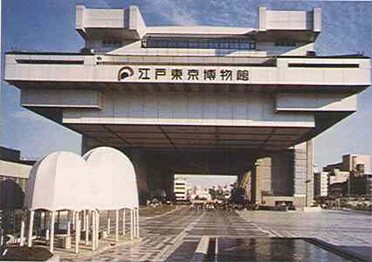| Brothers in Sumo – part one Brian Lewin |
 |
NHK & the Ozumo
English Broadcast
Mark Buckton
A visit to NHK, years of watching the show and the opinions of our Ed-in-Chief
Hanging With the Rikishi
Barbara Ann Klein
Barbara Ann Klein recounts her experiences with the “boys” in a pictorial diary series
| Rikishi of Old Joe Kuroda |
 |
Sumo Exhibit at the
Edo-Tokyo Museum
Barbara Ann Klein
SFM’s Editor takes in the exhibit celebrating 80 years of the Japan Sumo Association at this famous Tokyo museum
| Heya Peek John Gunning |
 |
| SFM Interview Dave Wiggins sits down |
 |
Photo Bonanza
What a collection – All-Japan Sumo Tournament, Hakkaku-
beya visit and sumo exhibits at the Edo-Tokyo Museum
Kyushu Basho Review
Lon Howard
Lon gives us his Kyushu Basho summary, along with the henka sightings results, and his take on the year in brief
Lower Division Rikishi
Mikko Mattila
Mikko Mattila covers lower division ups and downs
| Hatsu Basho Forecast Pierre Wohlleben & Mark Buckton |
 |
Sumo 101
Eric Blair
Eric explains all you need to know and then some about the Kokugikan building – the mecca of sumo
| Kimarite Focus Mikko Mattila |
 |
Minusha
John McTague
John’s unique bimonthly view of news from outside the dohyo
Online Gaming
Eric Blair
For the lowdown on Guess the Kotomitsuki – baby of SFM’s John Gunning
Kokugi Connections
Todd Lambert
Todd’s bimonthly focus on 3 of the most interesting sumo sites today
| Fan Debate Intra heya bouts – |
 |
SFM Cartoons
Stephen Thompson
In the second of our cartoon bonanzas, sit back and enjoy ST’s offerings
Let’s Hear From You
What was it that made you a sumo fan? American Todd Defoe tells all
Readers’ Letters
See what SFM readers had to say since our last issue
Sumo Quiz
The Quizmaster
Answer the Qs and win yourself next basho’s banzuke.

Edo-Tokyo Museum (Photo Courtesy Edo-Tokyo Museum)
So, enjoy the photo bonanza (permission to photograph granted by the Edo-Tokyo Museum), and, if you have time before the exhibit closes, visit the Museum. It is an unforgettable experience even without the special sumo event! And don’t forget to visit the Museum Shop for some great sumo (and other) souvenirs.
Open: 10:00 am - 6:00 pm Saturday, Sunday, Tuesday, and Wednesday.
10:00am - 8:00 pm Thursday, Friday. Closed: Mondays (except on National Holidays);
Tuesdays, if the day before was a National Holiday, and December 28 - January 3 (inclusive).
Take the JR Sobu Line (local train) West exit, or the Oedo subway line A3 or A4 exit, to Ryogoku Station.
My profound gratitude to Mr. Yuji Tanaka and also to Ms. Maiko Kobayashi for their many kindnesses and courtesies to me in enabling this visit.
Photo bonanza Home
Ryōgoku continued to flourish as the sumō town even after the Meiji Restoration, and in June 1909, the former Ryōgoku Kokugikan (national sport arena) was opened. For a period of time after the war, the Grand Sumō Tournament left Ryōgoku to Kuramae Kokugikan, but in January 1985, the present Kokugikan was opened in Ryōgoku and has continued to this day.
The Construction of the Old Kokugikan: The Birth of Festival Space in Ryōgoku
Ryōgoku came to be known as the most prosperous part of Edo. However, due to fire prevention and urban landscape planning, shows, street performances, and stalls were cleared away one after the other from the district during the Meiji period. The atmosphere shown in the model of the west bank of Ryōgoku in our permanent exhibition area
The Kokugikan was designed by Tatsuno Kingo and Kasai Banji, who also designed the Tokyo station, and was completed in 1899. When there were no sumō matches, the Kokugikan was used for expositions and other events. It inherited the nature of an Edo period show house, and with the construction of Kokugikan, Ryōgoku transformed into a new type of amusement district.
The Kokugikan was also used as shelters at times of natural disasters such as floods. During the war, it became a factory for making balloon bombs (“balloon bomb” is displayed at the “Air
